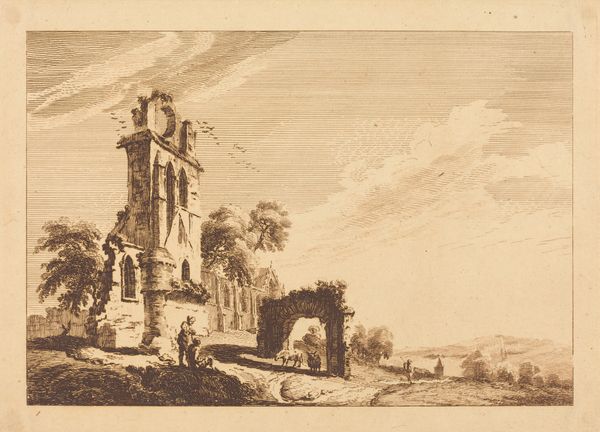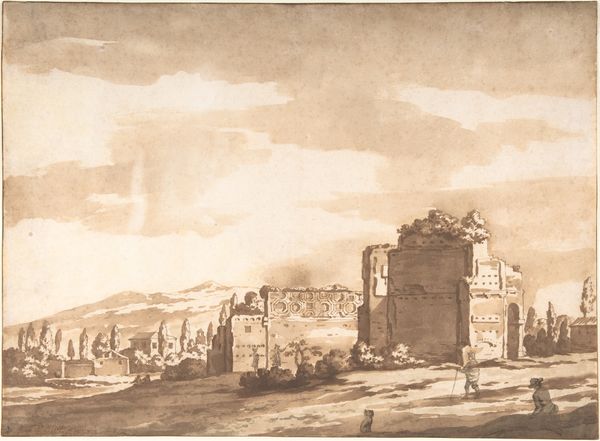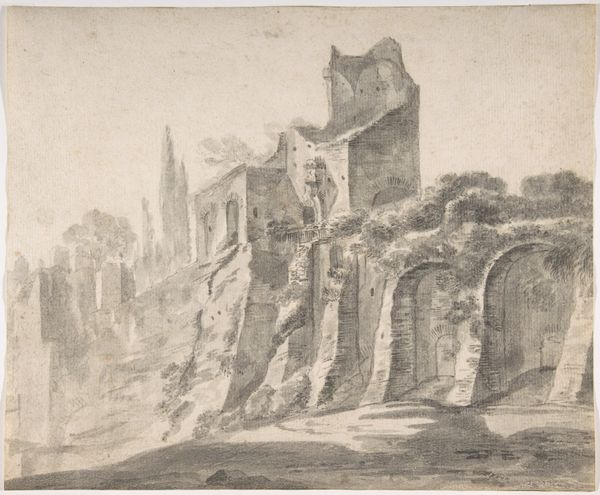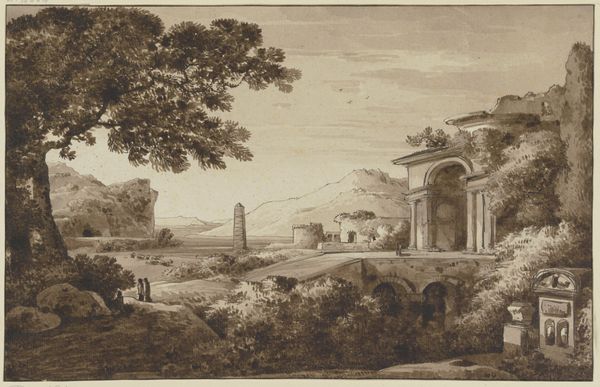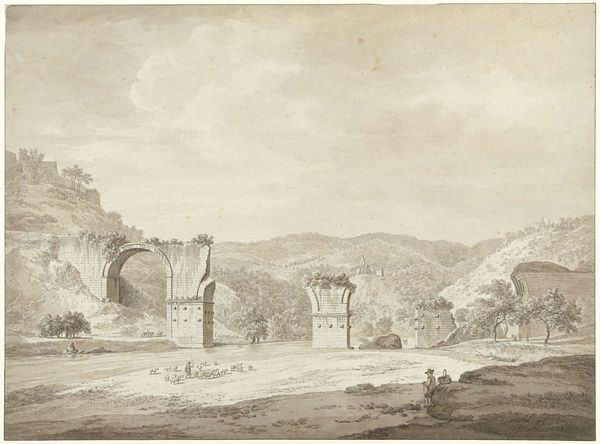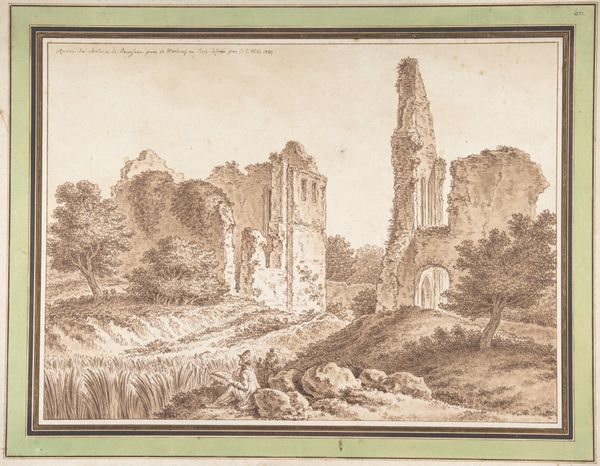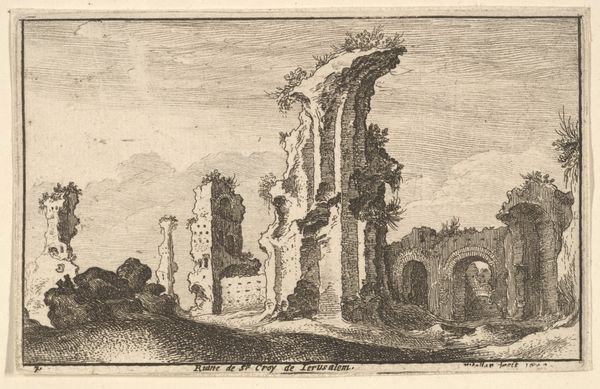
Landschaft mit römischen Ruinen, vorne reitet eine Hirtin mit der Herde durchs Wasser, links zwei Maler
0:00
0:00
drawing, ink, architecture
#
drawing
#
baroque
#
landscape
#
ink
#
14_17th-century
#
history-painting
#
architecture
Copyright: Public Domain
Curator: Oh, it just pulls you in, doesn't it? It's dreamlike, faded, ancient… almost like a half-remembered story. Editor: This is a landscape drawing by Adriaen van de Velde, and it's titled "Landschaft mit römischen Ruinen, vorne reitet eine Hirtin mit der Herde durchs Wasser, links zwei Maler." Which translates to, "Landscape with Roman Ruins, in front a shepherdess rides with the herd through the water, on the left two painters." Curator: That title is a mouthful! So, Roman ruins, eh? Immediately, I see these fragmented structures, these colossal remains sort of haunting the composition. And yet, life goes on—the shepherdess, the herd, even those painters trying to capture the scene. What ink on paper this must have been? I see such contrasts—decay and continuity all at once. It feels deeply allegorical to me, not simply an exercise in depicting place. What would you say, based on Van de Velde's cultural and personal background? Editor: Considering that many 17th-century Dutch artists flocked to Italy, these weren’t merely travel souvenirs but, in many ways, attempts to imbue their art with the gravitas of classical history. It's fascinating that these ruins, which symbolize the decline of an empire, become part of a pastoral scene. The contrast between the crumbling grandeur and the simplicity of the herders is really powerful. And those painters! What might their symbolic function be, beyond mere observers? Curator: Exactly! Those figures add another layer – they become metaphors for us, the viewers, attempting to interpret and integrate the weight of the past into our own present. You get the impression that even these ruins themselves weren't just random scenery for van de Velde but vehicles to reflect upon transience, memory, the cycle of civilizations, perhaps? I keep returning to that gentle wash of ink – sepia tones lend the whole thing this sepulchral elegance... Editor: The monochrome certainly elevates that effect. It's an emotionally intelligent piece that encourages deep contemplation, doesn't it? Beyond the visual charm, there's something profoundly moving about seeing how artists have, across eras, engaged with the ruins of what came before, seeking meaning in fragmentation. Van de Velde truly leaves us pondering long after we've turned away.
Comments
No comments
Be the first to comment and join the conversation on the ultimate creative platform.
